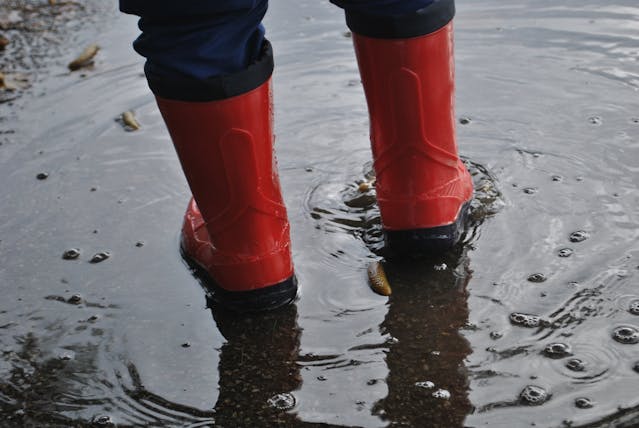
Key Takeaways
- Climate risks directly influence long-term property value, maintenance costs, and insurance requirements.
- Flooding, heat, and storm-related damage are the most significant risks for Richmond rental owners.
- Proactive assessment and upgrades help protect investments and keep rental units competitive.
Climate-related risks are no longer distant possibilities but real factors that shape a property’s long-term value, maintenance costs, and insurance requirements. Heavier rainfall, rising temperatures, and more frequent storms could impact property owners' investments.
Understanding climate risks doesn’t just protect your property; it helps you make strategic decisions that enhance resilience, safeguard returns, and maintain tenant stability.
For investors in Richmond, Virginia, these considerations are especially important. The region is seeing shifts in weather patterns, increasing storm intensity, and periodic flooding challenges that may affect both single-family and multi-family rentals.
With thoughtful planning and help from a property management company like KRS Holdings, property owners can position their rentals to withstand future conditions while maintaining long-term profitability.
Understanding What Climate Risk Means for Real Estate
Climate risk refers to the potential damage or financial loss that stems from environmental changes. This includes both acute events and long-term shifts.
Acute events happen suddenly, such as hurricanes, flash floods, or extreme storms. Long-term changes occur gradually, including rising temperatures, higher humidity levels, and sea-level changes that may affect groundwater.
Both categories contribute to higher repair expenses, increased insurance premiums, operational disruptions, and shifts in tenant demand.
Real estate is particularly sensitive to climate effects because it is tied to a specific location. Unlike other investments, property cannot move. Its exposure depends on environmental patterns, local infrastructure, and municipal resilience planning.
Investors who understand their region’s vulnerabilities are better positioned to protect their assets and identify opportunities that others may overlook.

Climate Risks That Most Affect Rental Properties
Flooding
Heavy rainfall, stormwater overflows, and river flooding are becoming more frequent in many parts of the United States. In Richmond, proximity to the James River and surrounding waterways increases the need to assess elevation, drainage systems, and historical flood data.
Even when a property is not in a designated flood zone, severe storms may still pose risks that lead to expensive repairs or tenant displacement.
Temperature Changes
Longer and hotter summers place pressure on cooling systems, which raises energy usage and may lead to higher turnover if tenants feel uncomfortable. Humidity concerns can contribute to mold growth, damage to building materials, and indoor air-quality challenges. Over time, these factors affect maintenance budgets and tenant satisfaction.
Wind-Related Risks
Stronger storms can damage roofs, porches, siding, and outdoor structures. In older neighborhoods, mature trees increase the risk of property damage when branches or entire trunks fall during storms. Rental owners need to consider tree maintenance and structural reinforcement as part of a comprehensive climate-resilience plan.
Assessing Flood Hazards Before Investing
Evaluating whether a property is exposed to flooding is one of the most important steps in climate-risk assessment. Investors should review local flood maps, understand the area’s drainage systems, and investigate whether nearby neighborhoods have experienced water-related damage in the past.
Richmond includes zones with differing flood exposure, and even small topography differences can dramatically influence risk.

Inspecting the property’s grading and runoff pathways helps you see how water moves during heavy rain. A home that sits on a slope may face different challenges from one at the bottom of a hill.
Consider whether the gutters, downspouts, and soil grading direct water away from the foundation. If not, you may encounter long-term moisture problems that slowly undermine structural stability.
Past flooding events can also signal future concerns. Speaking with neighbors or checking municipal archives may reveal whether the area frequently experiences water accumulation during storms. Although historical data is not a perfect predictor, repeated flooding patterns deserve careful evaluation before you commit to an investment.
Evaluating Heat and Energy-Efficiency Risks
Rising temperatures increase utility costs for rental properties, especially in regions that already experience warm summers. Richmond often sees extended hot and humid days, which increases tenant reliance on air conditioning. Older HVAC systems may struggle under these conditions, leading to more breakdowns and higher repair fees.
A strong climate-risk strategy includes analyzing the property’s insulation, window quality, and ventilation. Energy-efficient improvements reduce strain on cooling systems and help maintain comfortable indoor conditions. These upgrades also enhance your rental’s marketability and can increase long-term property value.
Moisture problems from humidity present another challenge. Persistent dampness creates conditions for mold growth, which can damage drywall, flooring, and tenant belongings. Regular ventilation checks and periodic inspections help prevent problems from escalating.

Storm Impacts and Structural Vulnerability
Severe storms are becoming more common across the East Coast. For property investors, this means examining the roof age, materials, and structural design of any home you plan to purchase. Roofs nearing the end of their lifespan are more likely to fail during wind events, and missing shingles or weakened underlayment leave interiors exposed to water intrusion.
Exterior features such as decks, porches, and balconies must also be evaluated. These structures can be damaged easily by storms if they are not properly reinforced. Ensuring that handrails, supports, and boards meet building safety standards helps reduce the risk of costly repairs.
Tree placement on or near the property should be part of your assessment. Large roots may affect foundations, while unstable trees can cause extensive damage during storms. Routine trimming and professional tree evaluations help mitigate hazards before they create issues.
Market and Insurance Implications
Climate risk affects more than the physical structure. Insurance availability and cost are increasingly tied to environmental exposure. In areas with higher flood or storm risk, premiums may be significantly higher than in lower-risk regions. Some insurers have begun adjusting policies or limiting coverage in areas where climate impacts are worsening.
Understanding insurance trends in Richmond helps investors plan budgets more accurately. Before purchasing any rental property, it is wise to request quotes from multiple insurers. This gives a clearer picture of annual expenses and helps determine whether the investment remains financially viable.

Market demand is another factor influenced by climate concerns. Renters are increasingly aware of resilience features, energy-efficient upgrades, and safety standards. A well-maintained property that can withstand environmental pressures is more appealing to long-term tenants, which reduces turnover and vacancy risks.
Bottom Line
Climate risks are now a major factor in real estate investing, especially in areas like Richmond where weather patterns continue to shift. Understanding these risks allows property owners to protect their investments, reduce maintenance expenses, and ensure tenant comfort.
By evaluating flood exposure, temperature changes, storm vulnerabilities, and insurance trends, investors make informed decisions that strengthen their rental portfolio.
With proactive planning and the support of a reliable property management partner like KRS Holdings, you can continue growing your investments with confidence, knowing your properties are prepared for the future.






